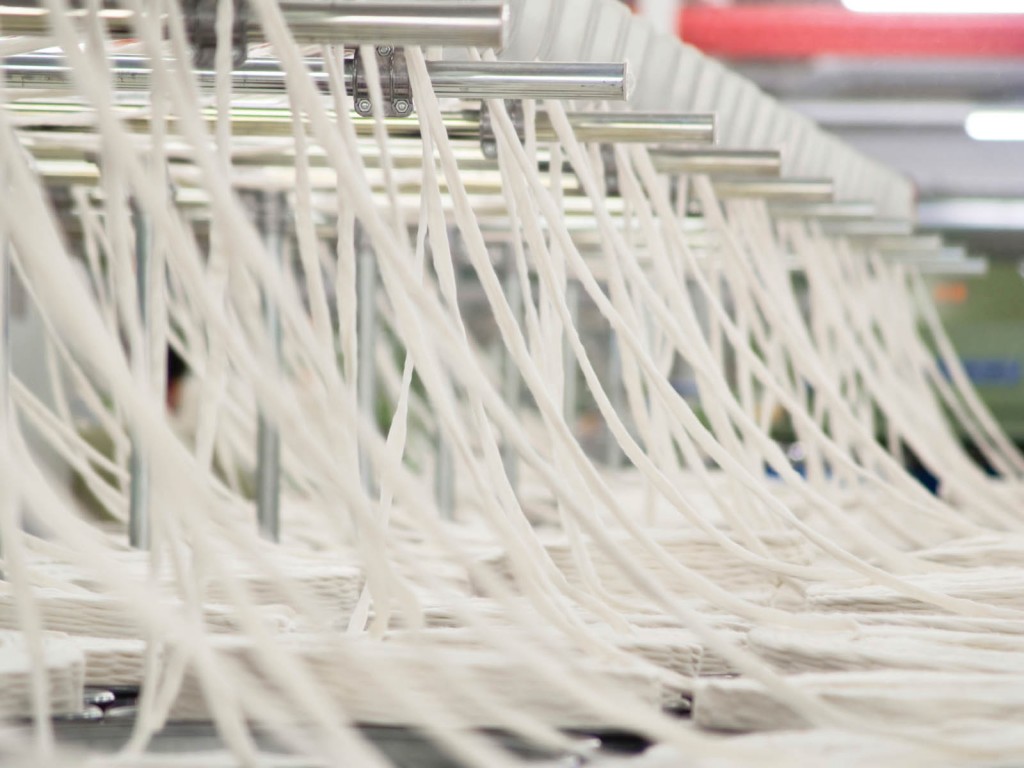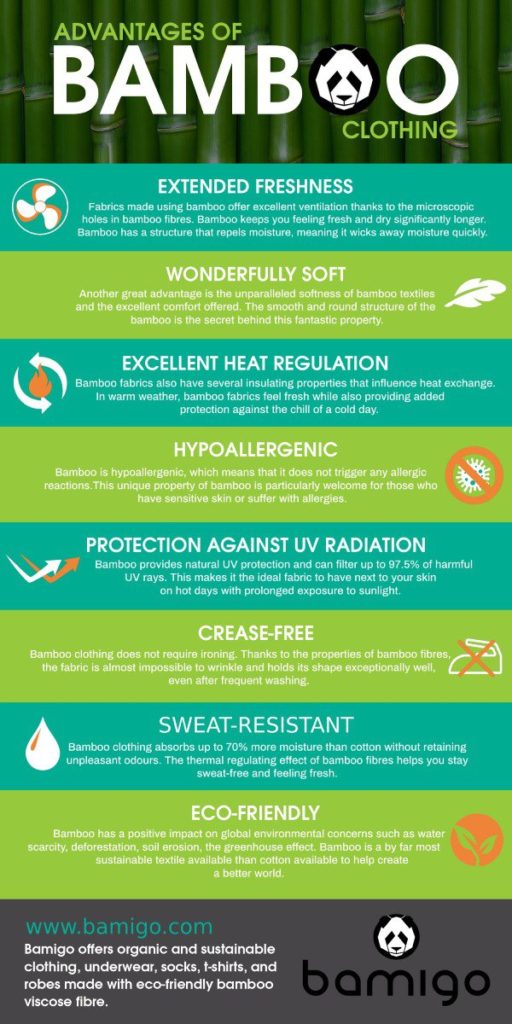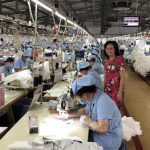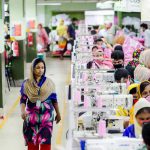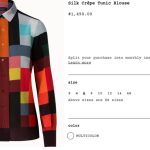Bamboo rarely if ever needs replanting. The miracle of bamboo is that it miraculously will sprout on its own and one acre of bamboo will yield 10 times more than one acre of cotton. Cotton needs harvesting and re-planting each year which can be a process. Some species of bamboo can grow up to 4 feet a day and can be fully harvestable within 3-4 years all while replenishing the crop on its own.
Bamboo is a natural fiber that can be processed either as a naturally occurring bast fiber (bamboo linen) or a regenerated manufactured fiber (bamboo rayon or viscose or lyocell).
Bamboo is often advertised as a more sustainable fabric, but this is not necessarily the case. What is more sustainable about bamboo is that it is a fast-growing, renewable grass that often has beneficial impacts on soil and air. Unfortunately, the processing of bamboo grass into a textile fiber can be chemically intensive with seriously harmful impacts.
Bamboo linen can be processed mechanically using the same processes used to produce linen from hemp or flax, with similar sustainability benefits and considerations. It is often referred to as “mechanically processed” bamboo. Unfortunately, bamboo linen makes up a minuscule amount of bamboo fabric on the market because it is more labor intensive and costly.
Most commonly, bamboo is used to make conventional rayon, in which it goes through the same viscose process as rayon. This process can use harmful amounts of chemicals and energy. Bamboo rayon is preferable to conventional rayon, which can come from unsustainably harvested trees and even deforested ancient forests, but it is still considered a less sustainable fiber. Bamboo can also be processed using the Lyocell process, which uses less toxic chemicals and a closed-loop manufacturing process, thus a more sustainable alternative to the rayon viscose process.
The Federal Trade Commission (FTC) requires companies to list “rayon made from bamboo” when items are not natural bamboo and goes after false green claims. “The truth is, most “bamboo” textile products, if not all, really are rayon, which typically is made using environmentally toxic chemicals in a process that emits hazardous pollutants into the air. While different plants, including bamboo, can be used as a source material to create rayon, there’s no trace of the original plant in the finished rayon product.
If you make, advertise or sell bamboo-based textiles, the Federal Trade Commission, the nation’s consumer protection agency, wants you to know that unless a product is made directly with bamboo fiber — often called “mechanically processed bamboo” — it can’t be called bamboo. Indeed, to advertise or label a product as “bamboo,” you need competent and reliable evidence, such as scientific tests and analyses, to show that it’s made of actual bamboo fiber. Relying on other people’s claims isn’t substantiation. The same standard applies to other claims, like a claim that rayon fibers retain natural antimicrobial properties from the bamboo plant.”
Sustainability Considerations
Bamboo growing and cultivation has minimal environmental impacts. It is a type of grass that grows extremely quickly and heartily in a variety of climates. In fact, it grows so quickly it is known to smother weeds. Bamboo generally does not require the use of chemical pesticides or fertilizers. It requires little water, usually depending on rainfall with no extra irrigation. Most bamboo is regularly harvested on managed farms where the land is not tilled, but some is harvested from natural bamboo forests. Natural bamboo does not threaten wild bamboo forests or natural habitats. Concerns include depleting natural bamboo habitats for pandas and clearing forests for bamboo plantations. But for the most part, these are not a major problem.
Bamboo improves soil quality and prevents erosion. Because bamboo growth expands via underground shoots, soil is not disturbed by heavy machinery when harvesting the stalks or starting new plants. It absorbs 5 times more carbon and produces 35 percent more oxygen than a similar stand of trees.
Certified organic of FSC certified bamboo is recommended. At the very least, ensure your bamboo source is not harming natural forests or wildlife. Retting and processing of bamboo linen can have harmful environmental impacts.
Retting refers to the process in which the natural fibers are separated from the stem of the bamboo plant (similar to retting flax and hemp). Chemical retting is frequently used due to its speed and control over uniform fiber quality. Chemical retting utilizes harmful chemicals and can cause further damage in the disposal of wastewater (rich in chemicals and harmful biological waste) if not properly treated. Water retting can use high large amounts of water and energy (to heat water), in addition to creating biological pollution. Even when retted in natural stagnant ponds or rivers biological pollution can be a problem, like eutrophication. Once the bamboo fiber is extracted from the stem, processing it into yarn is largely mechanical with minimal environmental impact.
Additional processing of bamboo can include bleaching to remove bamboo’s natural golden color, softeners, wrinkle-resistors, dyes, bleaching and other finishes. These processes can involve using large volumes of water, energy, and harmful chemicals. Avoid harmful chemicals and pollutants (refer to RSL or organic standards), and if you have to use them make sure they cause no harm to workers or the environment, and that they are responsibly disposed of. Where water is involved, try to reduce the amount needed, recycle, and clean wastewater (to either make it useful to be filtered back into your processing or safe if it becomes waste). Use less and better energy. For retting, dew retting is preferred, which requires no additional inputs of energy, water, or chemicals and allows nutrients to return to the soil through natural decomposition.
Processing of bamboo rayon can have harmful environmental impacts. Pulp production and the breaking down of pulp to turn it into a fiber often requires large quantities of acid and toxic chemicals that pollute air and water. Clothing made from rayon often uses large quantities of water, toxic dyes, and finishing chemicals. Air emissions can include sulfur, nitrous oxides, carbon disulfide, and hydrogen sulfide. Chlorine compounds used during the bleaching process may be released to the atmosphere and VOCs are emitted to the atmosphere from wood chips stored outdoors.
Water emissions can include nitrates, phosphates, iron, zinc, oil, grease, and is often low in dissolved oxygen which endangers aquatic life. Effluent from the bleach plant, where bleaching chemicals containing chlorine are used, contains AOX and chlorate, which have toxic effects in the aquatic environment. Chlorine bleaching may also result in dioxins emissions, which are classified as persistent organic pollutants, highly toxic to humans and the environment. It is, therefore, suggested to choose bamboo lyocell over bamboo rayon, which uses less toxic chemicals and a closed-loop manufacturing process. An even better alternative with similar feel and appearance is Tencel, which is made from FSC certified, sustainably harvested eucalyptus.
Bamboo can be harvested once a year and is a good income source for people in many isolated rural areas. In some regions, bamboo production encourages preservation of cultural heritage, cultural traditions related to growing bamboo, and many handicrafts. Water, air, and environmental pollution (both chemical and biological) can not only harm the health of workers and people in communities near production, but impact their livelihoods by destroying local industries. Bamboo linen requires a lot of hand labor and should be closely monitored to ensure good, fair, and safe labor practices. Depending on the retting process, harmful chemicals may used and improperly dumped into local land and waterways. Even with natural setting process, eutrophication can have negative long-term impacts on communities.
Bamboo rayon production is dangerous for workers. Workers can be seriously harmed by the chemicals used to make most rayon. Carbon disulfide in particular can cause reproductive harm and damage to the nervous system (carbon-disulfide-based viscose is no longer made within the U.S.). Sodium hydroxide, also known as lye, can cause corrosion and chemical burns to workers who handle it frequently and without protection. Also, work accidents can occur from explosions or leakages in chemical storage areas. According to Paul D. Blanc, who teaches occupational and environmental medicine at the University of California, San Francisco, and wrote Fake Silk: The Lethal History of Viscose Rayon, throughout most of the 20th century, viscose rayon manufacturing was inextricably linked to widespread, severe and often lethal illness among those employed in making it. For workers in viscose rayon factories, poisoning caused insanity, nerve damage, Parkinson’s disease, and increased risk of heart disease and stroke.
Therefore, look for Fair Trade certified or transparent suppliers. Identify all people (stakeholders) impacted by the production of your product and make sure they are not harmed in the production of your product. Ensure good safety precautions are in place for workers.
Potential impacts during customer use care. In terms of consumer care, bamboo can be machine washed or dry cleaned. Because bamboo can wrinkle easily, pressing is often required. That said, the amount of electricity used in a bamboo garment’s lifetime is relatively low. Be sure to educate your customers about best consumer care practices (wash less, in cold water, hang dry, etc.)
Bamboo is biodegradable, unless bad stuff is added to it. Untreated hemp is completely biodegradable. Things like dye, toxic chemicals, blended fibers and trims can hinder biodegradability. Design for optimal biodegradability. Be sure to educate your customers about how to dispose of the product, or even consider a company take-back program so you can re-use or properly dispose of the products you make.
Why Bamboo?
|
More Sustainable Options include:
Number One. Choose bamboo linen over bamboo rayon. Understand the difference between bamboo linen and bamboo rayon. Bamboo linen is a more sustainable option than bamboo rayon and requires significantly less chemicals, water, and energy.
Number Two. Choose bamboo linen that is Certified Organic. You can search the GOTS Public Database to find certified vendors. It’s a bit harder to find than organic flax linen and can be more expensive.
Number Three. Go for Dew Retting which is better than water or chemical retting, but takes longer time.
Number Four. Use Natural dyes. As far as possible, use bamboo fiber in its natural color. If you must use dyes, opt for more sustainable dye options. To strip color, opt for enzymes over bleaching because enzymes use less water, are biodegradable, are gentler on the fiber, and wastewater is easier to clean. If bleaching is required, choose non-chlorine bleaches like hydrogen peroxide, ozone bleaching (using ozone gas).
If you must use bamboo rayon, choose Bamboo Lyocell. It uses less toxic chemicals and a closed-loop manufacturing process, unlike the conventional rayon viscose process.
Fiber Qualities of Natural bast bamboo fiber include: Good Absorbency, and its porous nature wicks away moisture; Good breathability, can help keep wearer cooler; Somewhat coarse hand, except in fine counts the yarn can have a silk touch; Minimal pretreatment is required; High affinity for dyes; Strong and durable. Bamboo is naturally antibacterial. Some studies suggest the reflectivity of bamboo fabric to be lower than flax or cotton, implying it is a good absorbent of UV radiations.
Manufactured regenerated bamboo fiber is like rayon. It has a soft hand with a nice drape, good breathability, silky texture and luster.
Infographic Courtesy: Bamigo. Bamigo is a strong, emerging brand producing an innovative line of men's clothing crafted using bamboo fibres.
